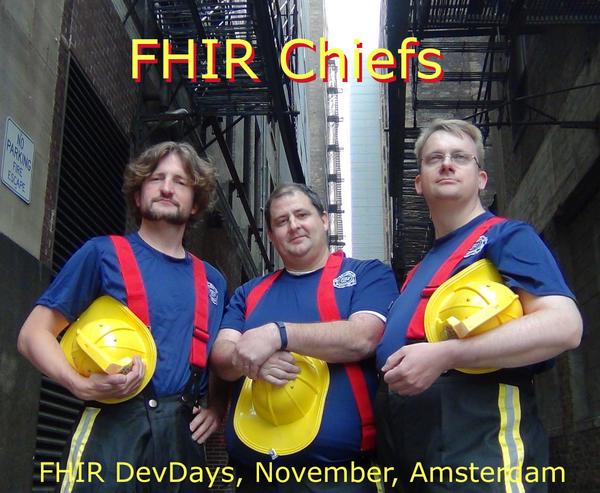I spent a good bit of time at the recent HL7 September Working Group Plenary meeting over the past five days with a lot of different workgroups.
While my home is usually Structured Documents, I only spent two quarters with them, first on forward planning and next hearing about the DAF FHIR project (which I'll talk about a bit more later). We also talked briefly about ONC's HIT Standards and Policy FACA's feedback on C-CDA and also recent issues regarding the quality of CCDA documents being produced. I agreed to bring this up in the HL7 Policy Advisory Committee meeting later on Wednesday.
I spent a good quarter with InM and ITS talking about the Data Access Framework PSS to create Query and Response profiles, in part satisfying one of the gaps identified in IHE's white paper on the
Data Access Framework (this is the link to the public comment version, the Final is to be published soon). One of the challenges here is that DAF wants to develop profiles that eventually will take advantage of the
C-CDA on FHIR project, but they want to do things sooner than that project will be ready so that people can take advantage of the Query and Response profiles to test them. I made the point that this needs to be coordinated across the other HL7 CDA/FHIR projects and the feedback I got was that "That isn't our project". This is a common misconception that happens quite a bit when folks bring projects to HL7 is that they think they own the project. The reality is, this becomes an HL7 project, and HL7 needs to do what it must to manage and coordinate ALL of the projects in its portfolio. So, there will be some coordination there, and hopefully, we'll figure out how to do that properly.
Another good quarter was spent on QUICK, in which we talked quite a bit about my ONE negative comment on QUICK, which was the "Bad" ballot you can read more about in
this post. We traded a lot of thinking about what QUICK is trying to do. One of the challenges of this work is that they think some of the names of things in FHIR are actually misnamed when approached from a quality and/or clinical decision support perspective, I think there are probably three or four things that QUICK needs to do to address these mismatches, including getting some change proposals on the FHIR agenda to address some of these naming issues. After all, if FHIR is truly EHR focused, we need to recall that at least in one market (the US), both Clinical Decision Support and Quality Measurement are key features that have to be present.
I spent a quarter with the HL7 Policy Advisory Committee, in which we spent about half the time planning the Policy Summit to be held in early December, and the other half discussion how to respond to concerns raised by the HIT FACAs on C-CDA. We already have many processes within HL7 to address such feedback, and HL7 members use these to get improvements into the standards pipeline. For example, the Examples task force headed by by Brett Marquard has already begun work on some of the examples that had been identified by the FACA. Fortunately, we've been tracking these issues, but it might be nice if someone actually fed them more directly into HL7. We'll be working on how to streamline that.
I spent a quarter with the Attachments workgroup, and we resolved some issues with esMD, but more importantly, Paul Knapp, chair of the HL7 Financial Management workgroup showed up to report on what he has been doing with FHIR in the Financial sector. A while back I wrote a post about how Blue Button Plus and EOB data might be used to help reduce costs, but one of the outstanding issues has been the missing content standard for an EOB. Building from the work that Paul has already completed with Claims and Remittances, we believe that FM could (and Attachments would support) the creation of an EOB resource that could be used with Direct, Blue Button Plus, or any other transport.
Thursday morning I spent with at the Payer Summit, giving payers a very high level view of HL7 Standards, along with many other HL7 luminaries. It wasn't the largest room, but it was certainly chock full of some very interested payers. I wasn't able to stay for the full summit, but I heard many good things. Also speaking at the Summit was Brian Ahier (
@ahier on twitter).
Finally, I spent my last quarter at the Working Group meeting with a number of HL7 and IHE members discussing the formation of a joint workgroup between IHE and HL7, preliminarily known as the Healthcare Standards Integration workgroup. The IHE board has already approved this in principle, and we are following the HL7 Governance process to finalize the new workgroup, with the expectancy of final IHE board approval. Hopefully it will be in place before we complete the 2015/2016 Profile Selection process with several IHE Domains in October/November.
All in all, it was a pretty busy week, and I was quite happy to get home to finish packing for my big move to the country, a week from tomorrow.




